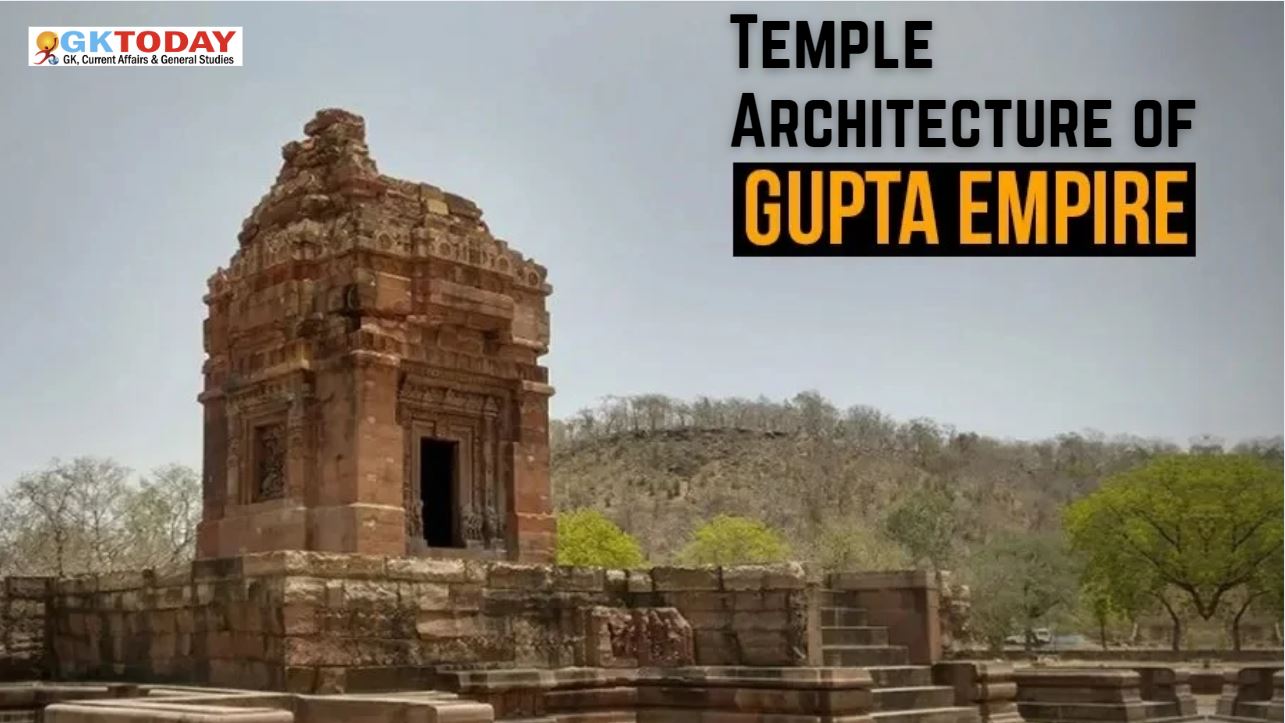Temple Architecture of Gupta Empire
Gupta Period is called Golden or Classical age of India partially due to the unprecedented activities and development in the arts, architecture, sculpture, painting and literature. The rock cut architecture reached at its zenith in Gupta era and a new beginning of free standing temple architecture began.
Key examples
The key examples of Gupta architecture among temples are Dasavatara temple of Deogarh, Bhitargaon temple, Vishnu Temple of Tigawa Jabalpur, Shiva Temple of Bhumara, Parvati Temple of Nachria Kathura, Mukund Darra Temple of Kota, Lakshaman Temple of Raipur, Shiva Temple of Koh and Bhitari Temple at Ghazipur. Among stupas, the Dhamekh stupa is the most prominent masterpiece of Gupta architecture.
Gupta Temple Architecture
Most prominent architectural marvels of Gupta period are temples. Most of the temples built in the Gupta era were carved with representation of Gods (mainly avatara of Vishnu and Lingams) and Goddesses. The Shikhara was not much prominent in the early Gupta temples but was prominent in later Gupta era. There was a single entrance or mandapa or Porch.
Gupta style temple was modelled on the architectural norms of the Mathura school. Sanchi temple at Tigwa has a flat roof. Dasavatar Temple at Deogarh , Bhitargaon temple and Mahadev Temple at Nachna Kuthar have a square tower of Shikhara. Manyar Math at Rajgriha is a circular temple of Gupta Era. Main style of temple architecture in Gupta period is Nagara style.
Dasavatara temple, Deogarh Uttar Pradesh
The most important temple of Gupta era is Dasavatar Temple of Deogarh, Uttar Pradesh. The temple was discovered by Captain Charles Strahan and was named so by Alexander Cunningham.
Comment on architecture of Dasavatara Temple
A transition to a new style had begun towards the end of the Gupta period in around 500 A.D. and it can be seen in the Dasavatara temple at Deogarh, which is first North Indian temple with a sikhara, though its shikhara is curtailed and part of it has disappeared. It is said that originally, its shikhara was of about 40 feet. Its stones were secured together by dowels and its four porches afforded relatively more space for the worshippers to congregate. The sikhara in this temple is in three tiers rising on the top of square cells, and embellished with an elegantly carved doorway on one side and three big panels placed outside the three walls. The sanctum of this temple stood on a raised plinth occupying the central square of the open terrace. The doorway leading to the sanctum was the chief centre of the attraction, serving as an elegant outer frame to set off the image installed in the cells.
The temple depicts the ten avataras of Vishnu. This temple has also been linked to the “Sarvatobhadra temple” mentioned in the Vishnudharmottara Purana by several scholars.
![]()
Bhitargaon Temple
Bhitagaon Temple is located in Kanpur District of Uttar Pradesh. It is the oldest remaining Hindu temple, and was built in the Gupta Era in 6th century. The special feature of this temple is that it is made entirely in bricks. It is conceived from top to bottom in terms of terracotta and bricks. It is beautified with several courses of well-preserved friezes and moulded bricks with designs exceedingly varied and beautiful. The temple has a pyramidal roof and its walls were decorated on the outside with terracotta panels, depicting scenes from Hindu mythology. Architecturally, the temple is important as it possesses the earliest true arch in India.

Dhamekha Stupa
The Dhamekha stupa is located at Sarnath, 13 km away from Varanasi. It marks the deer park or Rishipattana where Buddha gave his first sermon. It was constructed by Asoka. It is cylindrical in shape and about 34 m high and 28.3 m in diameter. The lower portion of the Stupa is covered completely with beautifully carved stones. The borders of Dhamekh Stupa have delicately carved geometrical and floral designs and figures of humans and birds. The base of the Stupa is made of stone with the upper areas of brickwork which probably once had a carved stone fencing. It is believed that Lord Buddha delivered his first sermon at the Dhamekh Stupa. Dhamekh Stupa bears special significance at Sarnath as it signifies the “seat of the holy Buddha”, as he proclaimed his faith.


